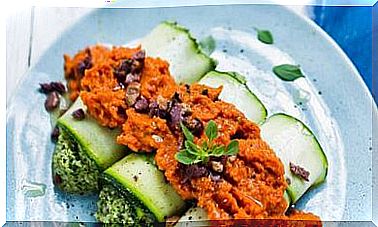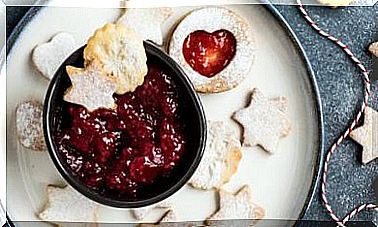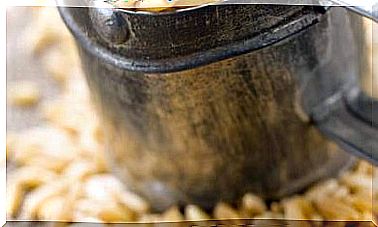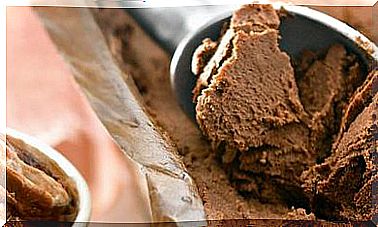7 Ingredients That Cannot Be Missing In Your Healthy (and Vegan) Purchase
If you don’t know what to buy or what you should have in the pantry to start cooking healthier, take a look and prepare the list of the purchase.
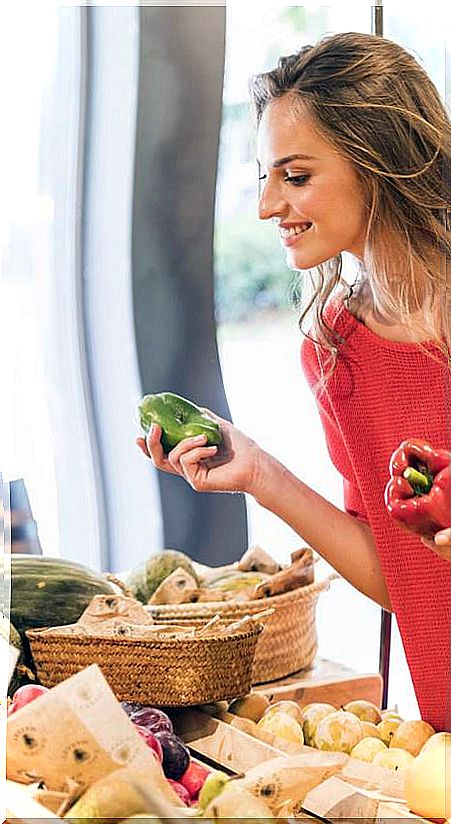
One of the beginner’s mistakes is not keeping a shopping list. It seems that we can remember everything in our heads, and we may, but we tend to buy more things than we need and things that we do not know how to use and that end up getting bad.
If you make a planning of the week’s meals, even if it is approximate, you can make a shopping list with everything you need and stick to it, so that you don’t end up buying more than necessary or on impulse, spending more and investing more time.
Another thing you can do is divide it by establishments. Do not do all the shopping in a supermarket, fruits and vegetables are much better in greengrocers, they have more variety, seasonal, cheaper and generally at a better point of maturity. In addition, you avoid a lot of packaging and wrapping that you don’t need.
7 ingredients to add to your shopping list
These are the ingredients that cannot be missing in your healthy purchase.
1. Legumes
They are a good part of my pantry. The staples are chickpeas, beans and lentils, both dried and potted. With these three legumes you can prepare everything from salads to vegetable cakes.
If you want something a bit more “pro”, buy different varieties of these legumes: beans, black beans, black beans, red lentils, peeled lentils, pedrosillano chickpeas, milky, etc. Each variety is different, depending on the size they usually have different cooking times (the smallest and the peeled ones take much less time), but they also provide a different texture and in some cases also flavor.
The possibilities are endless the more types of legumes we have. For an advanced level, that is, that you handle these legumes perfectly, I recommend starting to buy even less common ones: kala chana (Indian black chickpeas), mung, soybeans, azukis, etc. Azukis, for example, are often used in China and Japan to make sweets.
2. Cereals
For me, flaked oatmeal is synonymous with versatility. It is the same for a cup of cocoa or for making some breaded or thickening a stew in a moment.
The rice, preferably integral to the like paste.
To vary more it is recommended that you have some extra cereal in the form of flour or whole. For example, whole wheat flour, which is used for a lot of dishes, buckwheat, pasta made with other cereals, etc.
If you want to try new things, go for barley, rye, sorghum, job’s tears and millet.
3. Nuts
You can not miss the least few nuts and some pumpkin seeds peeled and unsalted. They are great for snacking at any time, to add to salads, stir-fries, etc., to make sweets, for breakfast and almost anything you can think of.
I always have at least walnuts, hazelnuts, sunflower seeds, pistachios and almonds.
For more flavors, textures, and more culinary repertoire, try cashew nuts (raw or roasted but without salt), sunflower seeds, macadamia nuts, and coquitos. With macadamia nuts and cashews you can make super good and creamy vegan cheeses, as well as homemade vegetable drinks with very pleasant flavors.
4. Seeds
Some I have put in the cereal section because we use them as such.
The Quinoa is a seed, not a cereal, and since it is more available rarely missing in my pantry. I love its taste and texture and how easy it is to make anything from meatballs to rejuvelac with it.
Also essential for me are flax seeds, which I use as an egg substitute, to make breads, for salads, etc., and sesame seeds, both white and black and toasted. I love them almost in any dish, sweet or savory.
If you want a good assortment of seeds also grab poppy seeds, mustard seeds of chia, of alfalfa and fenugreek. Chia seeds can be used like flax seeds, also as an egg substitute and thickener, and the others can be roasted and used as a spice and as an ingredient in homemade breads.
5. Oils
Extra virgin olive oil can never be missing. It is the one I use the most for everything. Next to the bottle, a smaller one with a spray bottle for those times when I just want to add a few drops but cover a surface well, for example a baking tray or a large frying pan.
The sesame oil I love it for its taste and I use it a lot in oriental dishes. The flax always raw for salads and toasts, more for its omega 3 content than for its flavor.
To try new recipes and preparations, you can try coconut oil, which is easy to use. It is solid at room temperature, but you can put it in a water bath to make it easier for you to use it. Walnut and peanut oils are also recommended , which will brighten up your salads and your oriental-inspired dishes.
6. Spices and herbs
For this I have a whole closet. I have almost everything.
The essentials: thyme, parsley, oregano and bay leaf. Only with those spices you can already give different flavors to many dishes.
To increase your repertoire of flavors recommend paprika, smoked paprika (paprika vera), cumin, MEGRA pepper, basil, rosemary and ginger. Most of the recipes I make use these spices as a flavor base, so they are the ones I use the most.
If you like to experiment as much as I do, grab as many as you see: spice mixes like curry and garam masala, curry leaves, asafoetida, sumac, turmeric, fennel seeds, nutmeg, sichuan pepper, chili powder , cardamom, allspice, dill… I can go on naming, but I guess you get an idea with these.
You can also choose them by types of dishes (for example if you are going to cook Indian dishes, curry, bay leaf, fenugreek, mustard seeds, etc).
7. Sauces and condiments
Vegetable broths powder and pills, apple cider vinegar, rice vinegar, soy sauce and tahini are my basic. With them I can make a whole range of dishes that do not even have to resemble each other but that have in common the addition of a seasoning other than spices.
Among vinegars, the only really essential vinegar would be apple, but in the vast majority of preparations it can be changed for lemon or lime juice. If you don’t like the taste or smell of vinegar, you don’t have to have it.
The balsamic vinegar should preferably be “traditional”, that is, without sugar or caramel. The authentic one does not have any of that and is very very good.
Some prepared dressings are not bad, for example those that are based on vinegar and fruits, or white wine and spices, but they can be made at home anyway. It is enough to keep the bottles and glass jars and let the liquids marinate with the spices and seasonings that we want.
Within soy sauces there are varieties. I use a lot of Chinese soy sauce but I also have thick or dark soy sauce, soy sauce with mushrooms, shoyu, tamari, etc. They are not essential sauces in general, but you will need at least a normal soy sauce to make a good seitan.
To have a good range of sauces and condiments, I recommend that you make yourself with a few different misos, Chinese, Japanese and Korean soy pastes, etc. They are unlike anything we normally make in taste, they are used in small amounts and last a long time.




